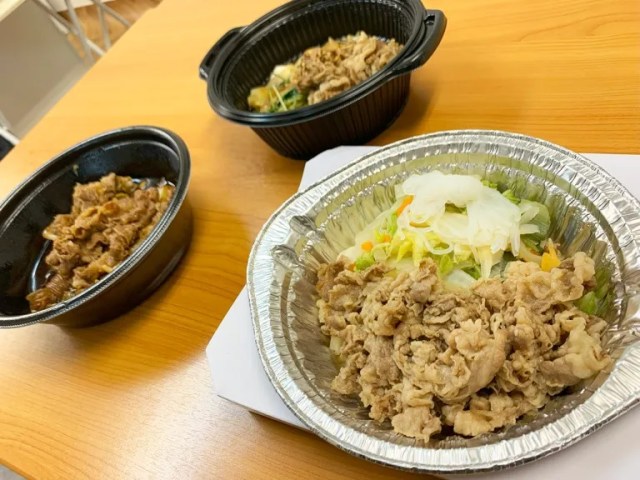
Turns out one wallet-friendly chain’s hot pot has a lot more meat.
We’re entering the best time of the year to eat sukiyaki. That’s not just because the traditional beef hot pot tastes especially good when the weather is cold, but also because late autumn and winter are the most affordable times to eat it.
Ordinarily, sukiyaki is a premium-priced meal choice. Every year in late autumn, though, a number of budget-friendly restaurant chains in Japan roll out their own suikiyaki sets, with the banners advertising the limited-time options appearing around the time the leaves start to change to their fall colors.
▼ Left to right: sukiyaki posters for Sukiya, Yoshinoya, and Yayoiken
For example, right now you can get a sukiyaki hot pot at beef bowl chain Yoshinoya, rival beef bowl chain Sukiya, and casual Japanese restaurant chain Yayoiken, all for less than 1,000 yen (US$6.70). We wondered, though, which chain’s sukiyaki set gives you the most beef, so to find out we picked up one of each and measured their meat content.
▼ Clockwise from top: Yoshinoya, Sukiya, and Yayoiken, with separate containers for the eggs that come with them.
Once we had their tops off, we grabbed a kitchen scale and a plate to weigh them on. Because this is a serious scientific research project, we wanted to ensure maximum accuracy, so we started by weighing the plate itself, determining its weight to be 8 grams (0.28 ounces).
First up was Yayoiken’s Sukiyaki Teishoku (sukiyaki set meal), which is priced at 900 yen for takeout. After transferring all of its beef to the plate, the scale read 67 grams, indicating 59 grams of beef.
Next was Sukiya’s 890-yen Gyusuki Nabe Teishoku (beef sukiyaki hot pot set meal), which tipped the scales at a startling 108 indicated grams, meaning 100 grams of beef!
This was such a big difference that we wondered if the number was being inflated by leftover drippings from the Yayoiken weigh-in, since we were using the same plate. But nope, with all of the beef removed, the plate’s weight was still just 8 grams, meaning that any moisture that had accumulated was having a negligible effect.
And last, it was time for Yoshinoya’s Gyusuki Nabezen (beef sukiyaki hot pot meal), 773 yen for takeout, which had 74 grams of beef.
So per order, you’re getting a lot more beef with Sukiya’s sukiyaki, and it’s also the best value in terms of meet-for-monetary outlay.
● Yayoiken: 15.3 yen per gram of beef
● Sukiya: 8.9 yen per gram of beef
● Yoshinoya: 10.4 yen per gram of beef
In terms of beefiness, Sukiya is an even better deal if you’re eating in, since Yayoiken and Yoshinoya charge slightly more for their eat-in sukiyaki set (950 and 787 yen, respectively) while Sukiya’s is the same price regardless of where you’re eating.
Of course, there’s more to sukiyaki than just the beef, and since we had three servings in front of us, we decided to eat them all and compare how they taste. Out of the three, Yayoiken’s broth is the sweetest and Sukiya’s the saltiest, with Yoshinoya somewhere in between. Their noodles are also slightly different. While they’re all udon, Yayoiken’s are chewier than the others’, and Yoshinoya’s have an interesting texture too, by nature of being flatter than udon noodles usually are.
Honestly, there’s not a bad pick in the bunch, but if you want the most meat, Sukiya is the one to go with.
Photos ©SoraNews24
● Want to hear about SoraNews24’s latest articles as soon as they’re published? Follow us on Facebook and Twitter!
[ Read in Japanese ]

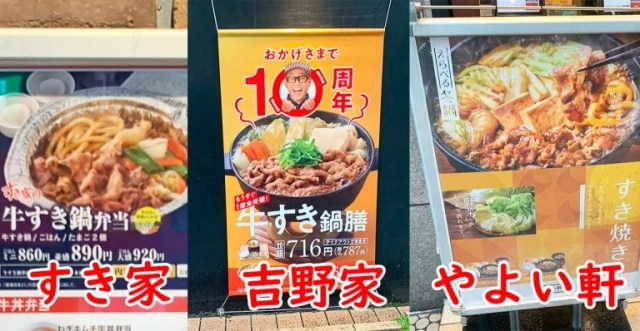
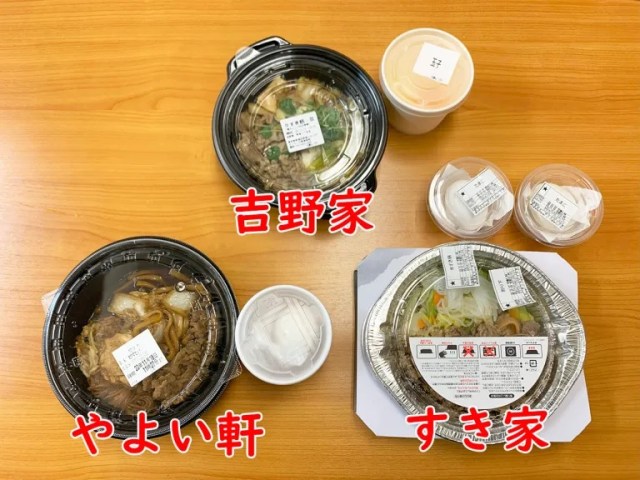
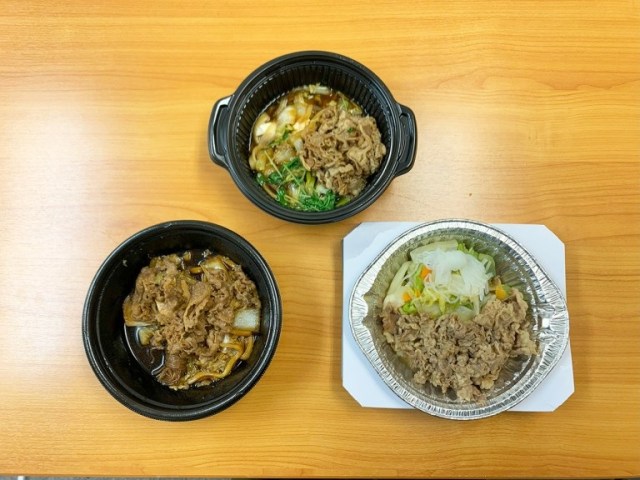
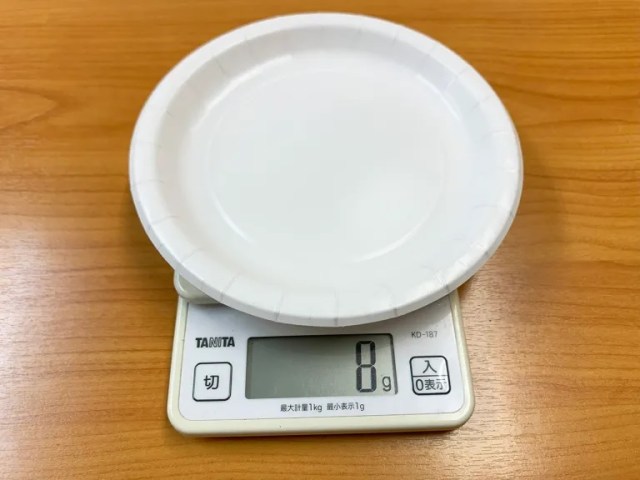
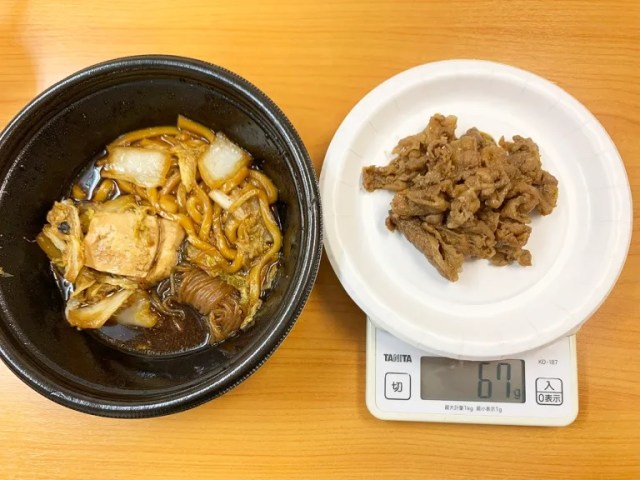
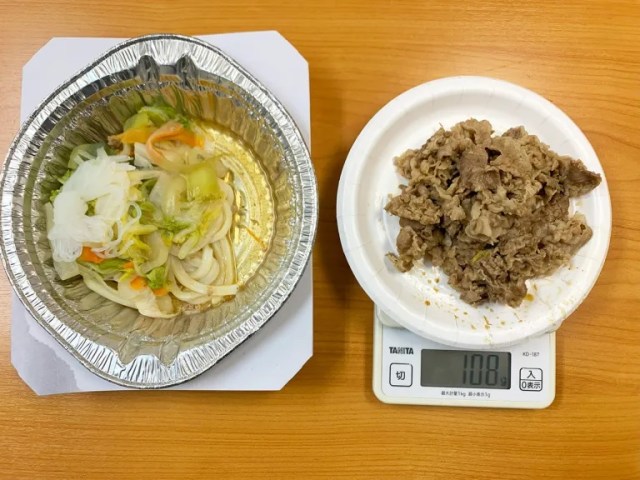
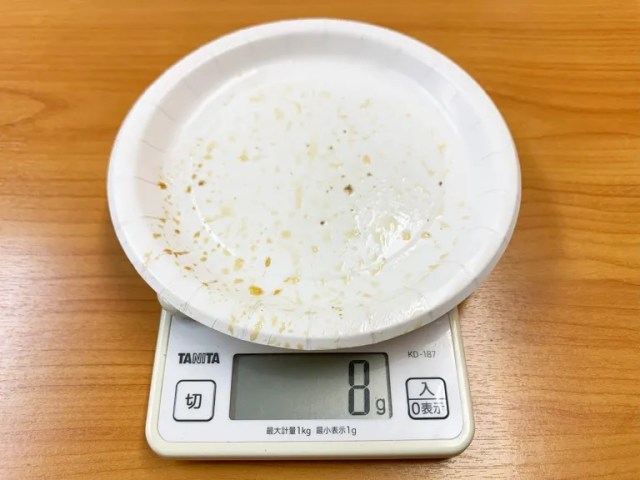

 Japan’s beef bowl king, Yoshinoya, releases new line of canned, ready-to-eat beef bowls
Japan’s beef bowl king, Yoshinoya, releases new line of canned, ready-to-eat beef bowls Japan’s new sukiyaki burger tops your burger with more beef all winter long
Japan’s new sukiyaki burger tops your burger with more beef all winter long Solo sukiyaki! Cook-in-the-counter hot pot is newest way to treat yourself to great food in Tokyo
Solo sukiyaki! Cook-in-the-counter hot pot is newest way to treat yourself to great food in Tokyo Yoshinoya has an ultra-luxurious wagyu beef bowl you can only get one place in Japan【Taste test】
Yoshinoya has an ultra-luxurious wagyu beef bowl you can only get one place in Japan【Taste test】 Japan’s giant sukiyaki burgers pair beef with beef for hot pot flavor in sandwich form
Japan’s giant sukiyaki burgers pair beef with beef for hot pot flavor in sandwich form Japan’s new difficult-to-drink-from beer glass protects your liver, but it’s a brutal experience
Japan’s new difficult-to-drink-from beer glass protects your liver, but it’s a brutal experience Demon Slayer: Kimetsu no Yaiba gets new roller coaster attractions and food at Universal Studios Japan
Demon Slayer: Kimetsu no Yaiba gets new roller coaster attractions and food at Universal Studios Japan How to order snacks on a Shinkansen bullet train in Japan
How to order snacks on a Shinkansen bullet train in Japan Burger King Japan suddenly adds Dr. Pepper and Dr. Pepper floats to its menu nationwide
Burger King Japan suddenly adds Dr. Pepper and Dr. Pepper floats to its menu nationwide New Pokémon ice cream, dessert drinks, and cool merch coming to Baskin-Robbins Japan【Pics】
New Pokémon ice cream, dessert drinks, and cool merch coming to Baskin-Robbins Japan【Pics】 Caffeinated ramen for gamers that you can eat with one hand going on sale in Japan
Caffeinated ramen for gamers that you can eat with one hand going on sale in Japan New samurai glasses are Japan’s latest weird must-have souvenir
New samurai glasses are Japan’s latest weird must-have souvenir McDonald’s adds new watermelon frappe and fruity macaron to its menu in Japan
McDonald’s adds new watermelon frappe and fruity macaron to its menu in Japan Princesses, fruits, and blacksmiths: Study reveals the 30 most unusual family names in Japan
Princesses, fruits, and blacksmiths: Study reveals the 30 most unusual family names in Japan We check out the local flavors of the commonly confused Ome and Aomi areas of Tokyo in one day
We check out the local flavors of the commonly confused Ome and Aomi areas of Tokyo in one day Nintendo history you can feel – Super NES, N64, and GameCube controllers become capsule toys
Nintendo history you can feel – Super NES, N64, and GameCube controllers become capsule toys Hello, cosmetics! Clinique teams up with Hello Kitty this summer for first-time collaboration
Hello, cosmetics! Clinique teams up with Hello Kitty this summer for first-time collaboration “The most Delicious Cup Noodle in history” – Japan’s French Cup Noodle wins our heart【Taste test】
“The most Delicious Cup Noodle in history” – Japan’s French Cup Noodle wins our heart【Taste test】 Starbucks releases a cute Frappuccino and Unicorn Cake…but not in Japan
Starbucks releases a cute Frappuccino and Unicorn Cake…but not in Japan Kyoto Tower mascot termination reveals dark side behind cute Japanese characters
Kyoto Tower mascot termination reveals dark side behind cute Japanese characters McDonald’s Japan’s Soft Twist Tower: A phantom ice cream only sold at select branches
McDonald’s Japan’s Soft Twist Tower: A phantom ice cream only sold at select branches Yabai Ramen: What makes this Japanese ramen so dangerous?
Yabai Ramen: What makes this Japanese ramen so dangerous? Finally! Nintendo Japan expands Switch 8-bit controller sales to everybody, Online member or not
Finally! Nintendo Japan expands Switch 8-bit controller sales to everybody, Online member or not Japanese government wants to build luxury resorts in all national parks for foreign tourists
Japanese government wants to build luxury resorts in all national parks for foreign tourists To combat declining birth rate, Japan to begin offering “Breeding Visas” to foreigners
To combat declining birth rate, Japan to begin offering “Breeding Visas” to foreigners 10 things you should buy at 7-Eleven in Japan
10 things you should buy at 7-Eleven in Japan Studio Ghibli releases anime heroine cosplay dresses that are super comfy to wear
Studio Ghibli releases anime heroine cosplay dresses that are super comfy to wear Woman charged for driving suitcase without a license in Osaka
Woman charged for driving suitcase without a license in Osaka Studio Ghibli unveils My Neighbour Totoro miniature house model
Studio Ghibli unveils My Neighbour Totoro miniature house model Kyoto experiencing problems with foreign tourists not paying for bus fares, but not on purpose
Kyoto experiencing problems with foreign tourists not paying for bus fares, but not on purpose Fighting mild hunger with a Japanese soda that turns into jelly in the stomach【Taste test】
Fighting mild hunger with a Japanese soda that turns into jelly in the stomach【Taste test】 Studio Ghibli’s Howl’s Moving Castle tapestry unveiled in Japan for first time
Studio Ghibli’s Howl’s Moving Castle tapestry unveiled in Japan for first time McDonald’s new Happy Meals offer up cute and practical Sanrio lifestyle goods
McDonald’s new Happy Meals offer up cute and practical Sanrio lifestyle goods Sales of Japan’s most convenient train ticket/shopping payment cards suspended indefinitely
Sales of Japan’s most convenient train ticket/shopping payment cards suspended indefinitely Sold-out Studio Ghibli desktop humidifiers are back so Totoro can help you through the dry season
Sold-out Studio Ghibli desktop humidifiers are back so Totoro can help you through the dry season Japanese government to make first change to romanization spelling rules since the 1950s
Japanese government to make first change to romanization spelling rules since the 1950s Foreigner’s request for help in Tokyo makes us sad for the state of society
Foreigner’s request for help in Tokyo makes us sad for the state of society Ghibli founders Toshio Suzuki and Hayao Miyazaki contribute to Japanese whisky Totoro label design
Ghibli founders Toshio Suzuki and Hayao Miyazaki contribute to Japanese whisky Totoro label design Doraemon found buried at sea as scene from 1993 anime becomes real life【Photos】
Doraemon found buried at sea as scene from 1993 anime becomes real life【Photos】 Tokyo’s most famous Starbucks is closed
Tokyo’s most famous Starbucks is closed Sushi chain bento combines raw fish with…sukiyaki?
Sushi chain bento combines raw fish with…sukiyaki? Semi-secret fried chicken from Japan’s big-three beef bowl chain Sukiya is worth tracking down
Semi-secret fried chicken from Japan’s big-three beef bowl chain Sukiya is worth tracking down Kentucky Fried Sukiyaki? Japanese-style hot pots now on the menu at KFC Hong Kong
Kentucky Fried Sukiyaki? Japanese-style hot pots now on the menu at KFC Hong Kong Tokyo, Osaka restaurants offering all-you-can-eat beef for two and a half bucks on Meat Day
Tokyo, Osaka restaurants offering all-you-can-eat beef for two and a half bucks on Meat Day Yoshinoya’s wagyu beef box for Japanese politicians
Yoshinoya’s wagyu beef box for Japanese politicians Beef bowl chain shows how to turn gyudon into cheese-tastic baked doria with almost no effort
Beef bowl chain shows how to turn gyudon into cheese-tastic baked doria with almost no effort Yoshinoya sells frozen beef bowl topping packs, but are they as good as the restaurant kind?
Yoshinoya sells frozen beef bowl topping packs, but are they as good as the restaurant kind? Beautiful beefy Yoshinoya gacha capsule toys look good enough to eat or display【Photos】
Beautiful beefy Yoshinoya gacha capsule toys look good enough to eat or display【Photos】 Two tastes in one with matcha green tea ramen, kombucha udon coming from Cup Noodle’s Nissin
Two tastes in one with matcha green tea ramen, kombucha udon coming from Cup Noodle’s Nissin Lonely diners discover an easy way to get handwritten confessions of love from Yoshinoya staff
Lonely diners discover an easy way to get handwritten confessions of love from Yoshinoya staff Yoshinoya has a semi-secret chicken bowl you won’t find anywhere on its website【Taste test】
Yoshinoya has a semi-secret chicken bowl you won’t find anywhere on its website【Taste test】 The Gentleman’s Cheese Beef Bowl, invented by Mr. Sato
The Gentleman’s Cheese Beef Bowl, invented by Mr. Sato Learn how to make sushi with a professional Japanese sushi chef in Tokyo
Learn how to make sushi with a professional Japanese sushi chef in Tokyo Sukiyaki Pizza Rice Bowl is Domino’s Japan latest fusion innovation
Sukiyaki Pizza Rice Bowl is Domino’s Japan latest fusion innovation Trying Yoshinoya for the first time in his life, is our Indonesian reporter impressed?【Taste test】
Trying Yoshinoya for the first time in his life, is our Indonesian reporter impressed?【Taste test】 How to have a great meal at conveyer belt sushi chain Kura Sushi even if you hate raw fish
How to have a great meal at conveyer belt sushi chain Kura Sushi even if you hate raw fish
Leave a Reply